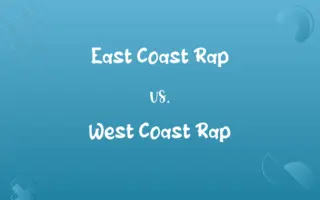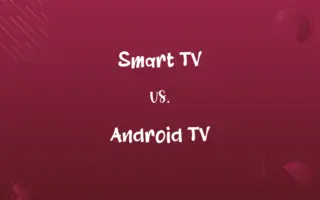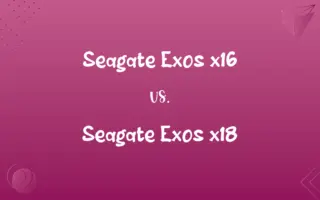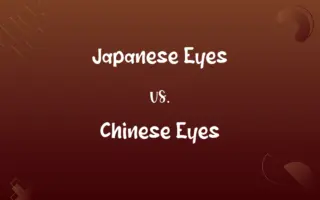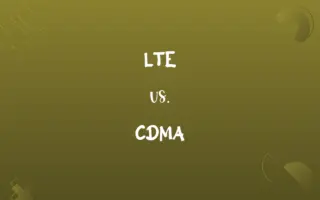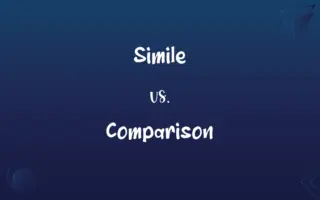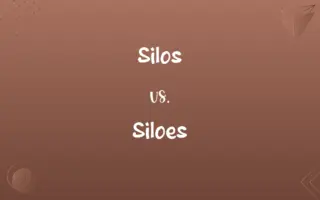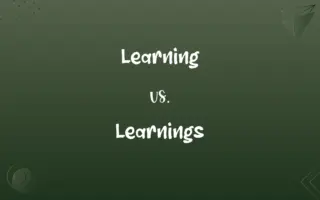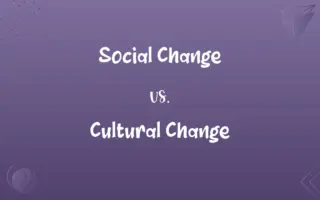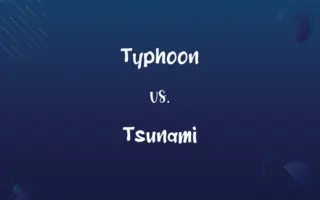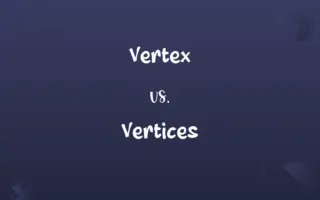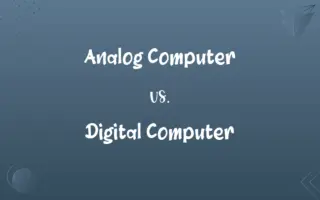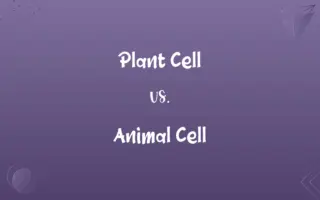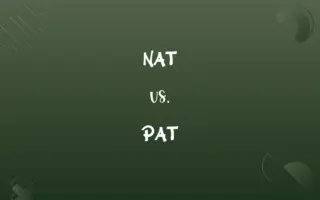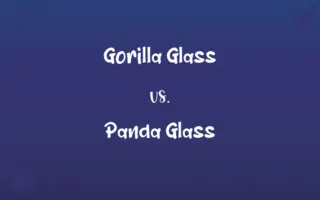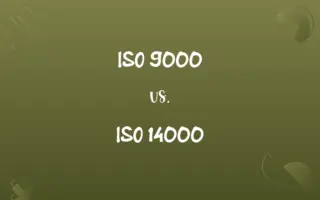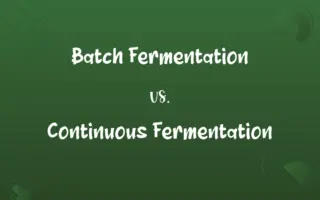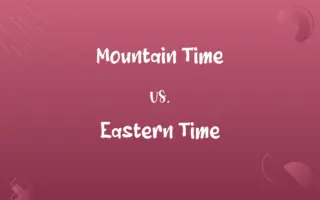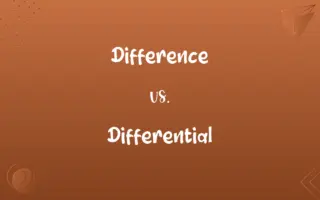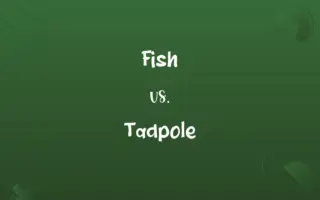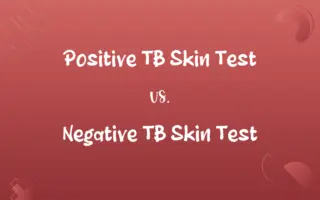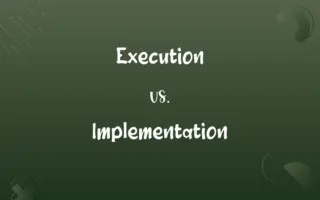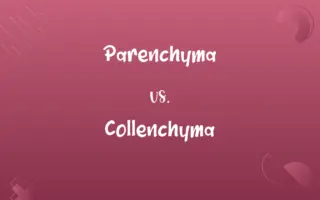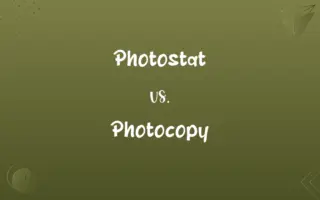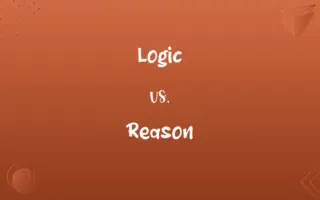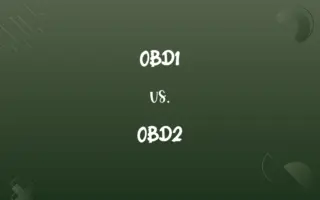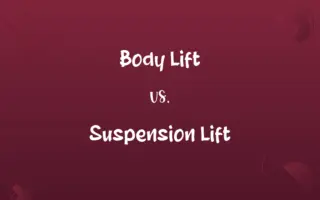Photosystem I vs. Photosystem II: Know the Difference

By Shumaila Saeed || Published on January 31, 2024
Photosystem I (PSI) primarily drives NADPH production; Photosystem II (PSII) splits water, generating oxygen and electrons for the light reactions.
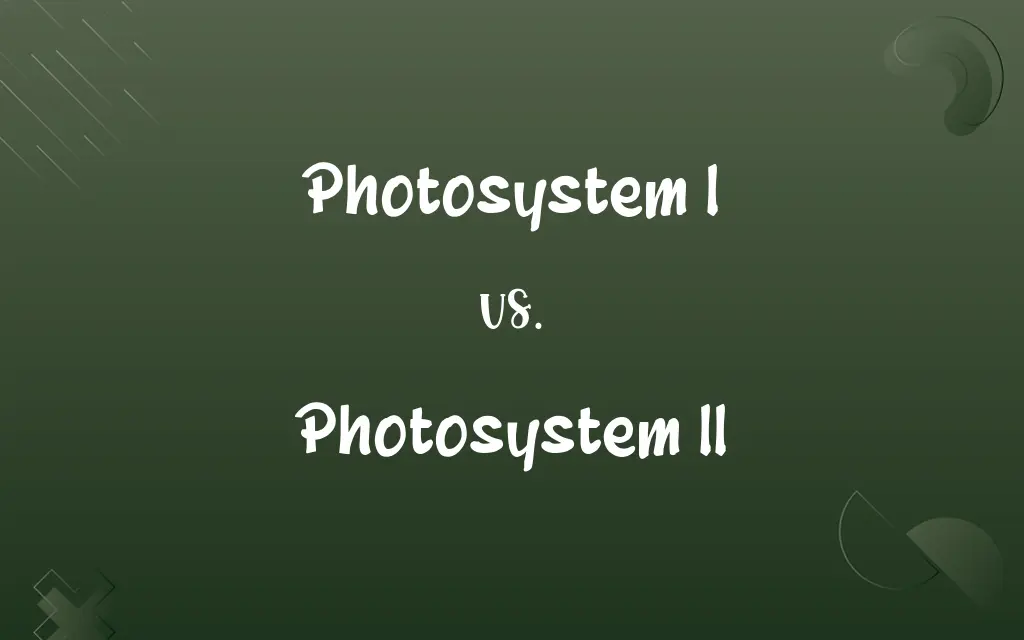
Key Differences
Photosystem I (PSI) and Photosystem II (PSII) are key components of the photosynthetic light reactions in plants. PSI is involved in the later part of the light reaction, primarily functioning in the production of NADPH, a molecule crucial for the Calvin cycle. PSII, on the other hand, acts in the earlier stage, splitting water molecules to release oxygen, protons, and electrons, which are then used in the electron transport chain.
Shumaila Saeed
Jan 31, 2024
Photosystem II (PSII) is the first protein complex in the light-dependent reactions of photosynthesis. It absorbs photons and uses the energy to extract electrons from water molecules, releasing oxygen as a byproduct. Photosystem I (PSI), conversely, is responsible for transferring electrons to NADP+, reducing it to NADPH. This reduction is vital for the synthesis of sugars in the Calvin cycle.
Shumaila Saeed
Jan 31, 2024
Photosystem I functions predominantly at a wavelength of 700 nm (P700), absorbing light energy that is then used for driving the synthesis of NADPH. Photosystem II operates at a slightly different wavelength, primarily at 680 nm (P680), and is integral to initiating the electron transport chain by providing high-energy electrons released from water.
Shumaila Saeed
Jan 31, 2024
PSII has a unique ability to split water molecules, a process integral to oxygenic photosynthesis. This attribute distinguishes it significantly from PSI, which does not participate in water splitting but rather focuses on capturing light energy to generate NADPH and drive the electron transport chain further.
Shumaila Saeed
Jan 31, 2024
Photosystem I and Photosystem II work in tandem within the thylakoid membranes of chloroplasts. While PSII generates the initial electron flow and contributes to creating a proton gradient for ATP synthesis, PSI efficiently completes the electron transport chain, facilitating the reduction of NADP+ to NADPH.
Shumaila Saeed
Jan 31, 2024
ADVERTISEMENT
Comparison Chart
Placement in Electron Transport Chain
Later stage, receives electrons from PSII
Initial stage, starts electron flow
Shumaila Saeed
Jan 31, 2024
Contribution to Photosynthesis
Synthesizing NADPH for Calvin cycle
Generating oxygen and electrons
Shumaila Saeed
Jan 31, 2024
ADVERTISEMENT
Photosystem I and Photosystem II Definitions
Photosystem I
Photosystem I functions primarily in NADPH production in the light-dependent reactions.
The efficiency of Photosystem I directly impacts the rate of NADPH synthesis in plants.
Shumaila Saeed
Jan 11, 2024
Photosystem II
Photosystem II is the first major complex in the light-dependent reactions of photosynthesis.
Electrons excited in Photosystem II are passed down the electron transport chain.
Shumaila Saeed
Jan 11, 2024
Photosystem I
Photosystem I operates at a peak absorption of 700 nm, harnessing light for photosynthesis.
The P700 reaction center of Photosystem I is key to its light-absorbing capabilities.
Shumaila Saeed
Jan 11, 2024
Photosystem II
Photosystem II absorbs light at a peak wavelength of 680 nm, essential for its function.
The P680 reaction center in Photosystem II is where light energy is first converted to chemical energy.
Shumaila Saeed
Jan 11, 2024
Photosystem I
Photosystem I is the second complex in the photosynthetic electron transport chain.
Electrons from Photosystem II are transferred to Photosystem I for further energy extraction.
Shumaila Saeed
Jan 11, 2024
ADVERTISEMENT
Photosystem II
Photosystem II is a protein complex that initiates the electron transport chain in photosynthesis.
Photosystem II's ability to split water is fundamental to the oxygen-producing process in plants.
Shumaila Saeed
Jan 11, 2024
Photosystem I
Photosystem I is a chlorophyll molecule complex essential for the light reactions in photosynthesis.
In photosynthesis, Photosystem I plays a crucial role in converting solar energy into chemical energy.
Shumaila Saeed
Jan 11, 2024
Photosystem II
Photosystem II is primarily responsible for water splitting and oxygen evolution in plants.
The oxygen we breathe is a direct result of the water-splitting activity of Photosystem II.
Shumaila Saeed
Jan 11, 2024
Photosystem I
Photosystem I plays a pivotal role in the energy conversion process of photosynthesis.
Without Photosystem I, the light-dependent reactions of photosynthesis would be incomplete.
Shumaila Saeed
Jan 11, 2024
Photosystem II
Photosystem II plays a crucial role in creating a proton gradient for ATP synthesis.
The proton gradient established by Photosystem II drives the synthesis of ATP in chloroplasts.
Shumaila Saeed
Jan 11, 2024
Repeatedly Asked Queries
Why is Photosystem I important for photosynthesis?
It completes the electron transport chain, essential for synthesizing NADPH used in the Calvin cycle.
Shumaila Saeed
Jan 31, 2024
How does Photosystem I function?
It primarily works to produce NADPH by capturing light at a wavelength of 700 nm.
Shumaila Saeed
Jan 31, 2024
What is Photosystem I?
Photosystem I is a complex in the chloroplasts that assists in converting light energy into chemical energy during photosynthesis.
Shumaila Saeed
Jan 31, 2024
What is Photosystem II?
It's the first protein complex in the light-dependent reactions of photosynthesis.
Shumaila Saeed
Jan 31, 2024
What distinguishes Photosystem I from Photosystem II?
Photosystem I focuses on NADPH production, while Photosystem II initiates the electron transport chain and splits water.
Shumaila Saeed
Jan 31, 2024
How does Photosystem II contribute to oxygen production?
By splitting water, it releases oxygen as a byproduct.
Shumaila Saeed
Jan 31, 2024
Where is Photosystem I located?
It is located in the thylakoid membranes of chloroplasts.
Shumaila Saeed
Jan 31, 2024
What is the primary role of Photosystem II?
Its main function is to split water molecules, releasing oxygen and initiating the electron transport chain.
Shumaila Saeed
Jan 31, 2024
Is Photosystem II involved in NADPH production?
Indirectly, as it starts the electron transport chain that leads to NADPH synthesis in PSI.
Shumaila Saeed
Jan 31, 2024
What happens if either Photosystem I or II is impaired?
Photosynthesis efficiency decreases, affecting plant growth and oxygen production.
Shumaila Saeed
Jan 31, 2024
What is the main difference in the light absorbed by Photosystem I and II?
PSI absorbs light at 700 nm, while PSII at 680 nm.
Shumaila Saeed
Jan 31, 2024
How do Photosystem I and II contribute to ATP synthesis?
They create a proton gradient used by ATP synthase to produce ATP.
Shumaila Saeed
Jan 31, 2024
What wavelength does Photosystem II operate at?
It operates primarily at 680 nm.
Shumaila Saeed
Jan 31, 2024
Why is Photosystem II crucial in the light reactions?
It provides the initial high-energy electrons needed for the electron transport chain.
Shumaila Saeed
Jan 31, 2024
Is Photosystem I more important than Photosystem II?
Both are equally important and fulfill different but complementary roles in photosynthesis.
Shumaila Saeed
Jan 31, 2024
Can Photosystem I operate without Photosystem II?
No, PSII provides the necessary electrons for PSI to function effectively.
Shumaila Saeed
Jan 31, 2024
What would happen to photosynthesis without Photosystem II?
The entire process would be disrupted, as it initiates the electron transport chain.
Shumaila Saeed
Jan 31, 2024
Do Photosystem I and II work independently?
They work in tandem as part of the light-dependent reactions in photosynthesis.
Shumaila Saeed
Jan 31, 2024
How are Photosystem I and II similar?
Both are integral to the light reactions, absorb light, and are located in the thylakoid membranes.
Shumaila Saeed
Jan 31, 2024
Can Photosystem I split water like Photosystem II?
No, water splitting is unique to Photosystem II.
Shumaila Saeed
Jan 31, 2024
Share this page
Link for your blog / website
HTML
Link to share via messenger
About Author
Written by
Shumaila SaeedShumaila Saeed, an expert content creator with 6 years of experience, specializes in distilling complex topics into easily digestible comparisons, shining a light on the nuances that both inform and educate readers with clarity and accuracy.

